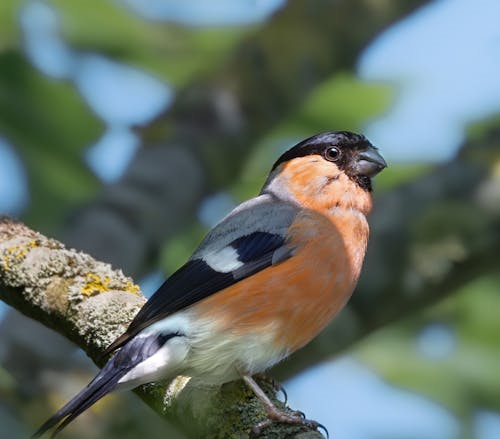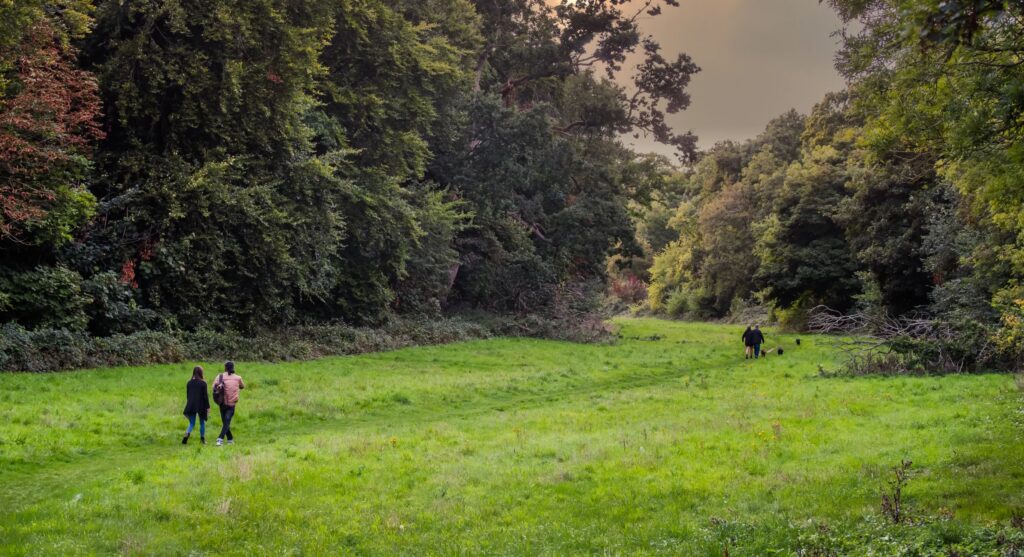
Closer to nature
Discover a landscape alive with nature
Experience the splendid isolation
of you and 10,000 other species
The Norfolk Coast is home to a wide range of habitats, including saltmarsh, sand dunes, woodland, and chalk rivers. These ecosystems host a range of rare and threatened species including seabirds, wading birds, water voles, otters, and the elusive natterjack toad! We’ve put together a list of some of the best places to visit to get closer to nature, without disturbing wildlife.


Sandringham Estate
Explore the estate’s 600-acre royal park, which has walking and cycling trails winding through woodland and parkland, including a 1.5-mile and a 2.5-mile route and a children’s woodland play area. Spend the day roaming amongst evergreen and deciduous trees, including Corsican and Scots Pine, sweet chestnut, birch and oak.

RSPB Snettisham
A bird-lovers’ sanctuary on The Wash with mudflats, lagoons and saltmarshes. From late summer to early winter, tens of thousands of wading birds, including knot, dunlin and oystercatchers gather on the mudflats to roost overnight. During winter, up to 40,000 pink-footed geese make their way from Iceland and Greenland to congregate.

Norfolk Wildlife Trust Holme Dunes
A Norfolk Wildlife Trust site where The Wash meets the North Sea. It attracts large numbers of migrating birds, plus natterjack toads, butterflies and dragonflies. A Bronze Age timber circle known as ‘Seahenge’ was uncovered by strong tides in 1998 after being hidden for 4,000 years, and was later removed for preservation.

RSPB Titchwell Marsh
A wild saltmarsh edged by a wide sandy beach offers fabulous views of thousands of birds as they come and go. The reserve’s diverse habitats also include reedbeds, saltmarsh and freshwater lagoons, where avocets, bearded tits and marsh harriers nest. Surrounding wildflowers make for a tranquil setting for visitors.

Barrow Common
Barrow Common sits on top of a hill less than a mile from the sea overlooking Brancaster Staithe. This area of wooded heathland gives panoramic views of the coast. Its patchwork of habitats provides homes for firecrest, marsh harrier, turtle dove, bats, butterflies and the common lizard. It also has recognised ‘Dark Sky’ status.

Holkham Hall
Explore the neighbouring stretches of sand, grazing marshes, saltmarsh and pinewoods. The reserve hosts breeding oystercatchers, ringed plovers, little terns and spoonbills. The tideline attracts sanderlings, while waders feed on the mudflats. Thousands of pink-footed geese, brent geese and wigeon can be seen when they visit in the winter.

Wiveton Downs
Designated a Site of Special Scientific Interest (SSSI), Wiveton Downs is a 3.5 km winding ridge between Blakeney and Glandford. A wildlife haven of heathland and gorse with spectacular views from the top, its remoteness means light pollution is minimal, and it’s an off-the-beaten-track stargazing spot with recognised ‘Dark Sky’ status.

Norfolk Wildlife Trust Cley & Salthouse Marshes
One of the country’s most popular birdwatching sites, this is an excellent spot to look out for avocets, spoonbills, redshanks, lapwings, sedge and reed warblers in the summer. In the winter you can spot brent geese, pink-footed geese and snow bunting, while bitterns, marsh harriers and bearded tits can be seen all year round.

Salthouse Heath
This 245-acre heathland rises steeply, offering spectacular coastal views. You can spot adder, common lizard, brown hare, roe deer and less common birds such as the linnet, tree creeper, kestrel, nightjar and turtle dove. It houses 11 scheduled monuments, including one of the most important Bronze Age barrow groups in Norfolk.

Kelling Heath
Designated a Site of Special Scientific Interest (SSSI), Kelling Heath offers walking trails across 300 acres of woodland and open heathland. Look out for wildlife, including the rare silver-studded blue butterfly. Board the steam train to the coast, and when the sun goes down, enjoy the night sky thanks to the park’s ‘Dark Sky’ status for stargazing.

National Trust Sheringham Park
1,000 acres of landscaped park and woodland gardens, with miles of walking trails. Climb a viewing tower to the treetops for 360° views, including of the coastline. Famous for its vast collection of rhododendrons and azaleas, it has a variety of habitats to explore, and is also home to ancient oaks, red deer, birds and butterflies.

Pretty Corner
This 165-acre patchwork of woodland and heathland is home to oak, beech and sweet chestnut trees that are hundreds of years old. Look out for bullfinches, kingfishers, butterflies, owls, bats and woodpeckers. Tread carefully around ferns and flowers, and head up to one of the highest points in Norfolk (315 ft) for lovely views.

National Trust Felbrigg Hall, Gardens & Estate
Explore 520 acres of woodland, parkland and walks around the lake. Spot golden plover, lapwings, owls, skylarks, linnets and yellowhammers, and hear great spotted and green woodpeckers. Early morning you may catch a glimpse of roe, red, muntjac or Chinese water deer, while at dusk eight species of bats come to life.

Hickling Broad & Marshes
Nestled within the Broadland landscape, Hickling is a sanctuary for rare wildlife, including Britain’s largest butterfly – the swallowtail. Its sweeping reedbeds, quiet trails, and guided wildlife boat trips provide opportunities to spot plenty of wetland species, including bitterns, cranes, marsh harriers, great crested grebe and winter wildfowl.

National Trust Horsey Windpump
The historic Horsey Windpump stands proudly overlooking Horsey Mere. Restored so that on certain days you see the sails turn, you can climb to the top for panoramic views of Broadland’s landscape. Renowned for its wildlife, from wintering wildfowl to the swallowtail butterfly, the area is ideal for year-round walking and birdwatching.

Broads National Park
The scenic rivers and open water of the Broads are Britain’s largest protected wetland, rich in wildlife and history. Near the coast, Filby, Ormesby and Rollesby Broads are tranquil and ideal to explore on foot, while Breydon Water is a spectacular backdrop to a show of migrating birds. Head inland for boating and exploring other broads.
Find your Norfolk experience

Beavers – nature’s eco engineers
Learn how Wild Ken Hill reintroduced Norfolk’s first beavers for hundreds of years. A guide will take you into the 50 acre enclosure to find out how these remarkable ecosystem engineers are shaping the landscape.

Classic cruiser sailing
Hoist the mainsail and wend your way along the Broads as you get up close to nature while sailing a classic yacht. Take in the sights and sounds of wildlife among the reeds and marshes as you navigate your way powered by wind.

Ringstead Downs
Explore this Site of Special Scientific Interest, where chalk stone was carved out by glacial meltwaters when the last Ice Age receded. It is incredibly rich in biological diversity and the largest area of chalk downland left in Norfolk.


